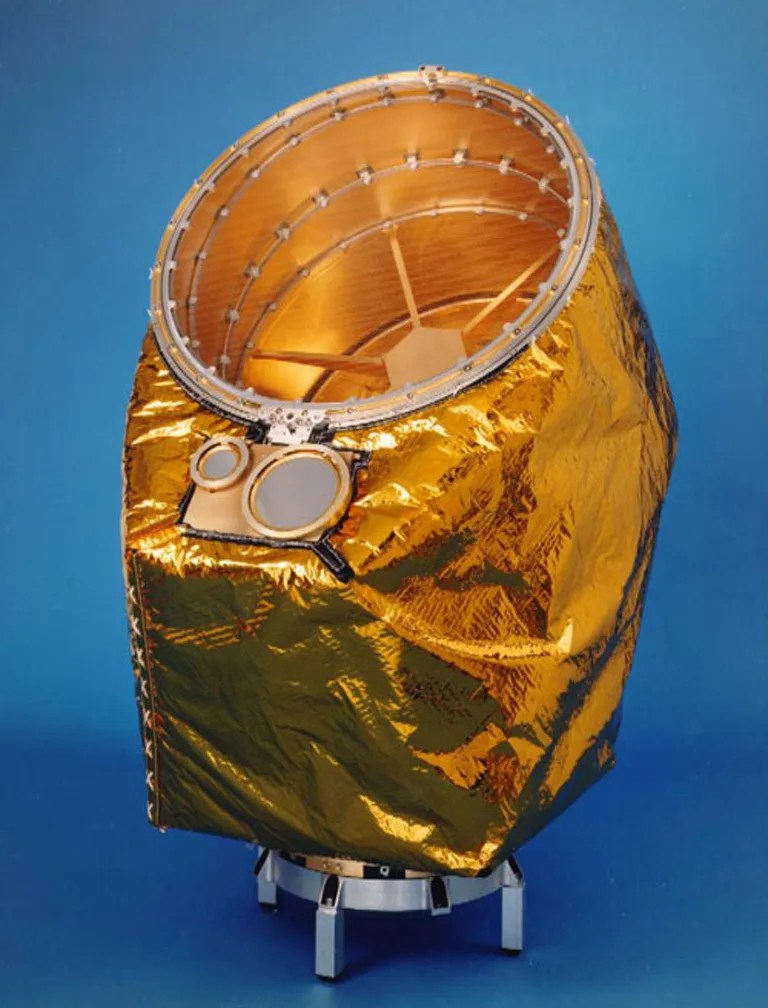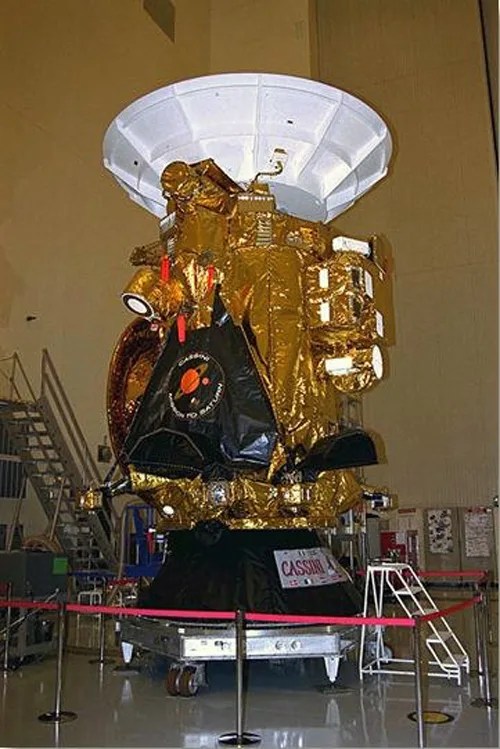2 min read

On Sept. 15, 2017, the incredible journey of the Cassini mission to Saturn came to an end. The spacecraft vanished into the planet at a speed of about 75,000 mph (120,000 kph), like a shooting star streaking across Saturn’s sky. In the end, Cassini became part of the planet itself.
The science team of the mission's Cosmic Dust Analyzer (CDA) instrument, led by Ralf Srama of the University of Stuttgart, points out that one part of Cassini was able to survive the fantastic 20-year-long journey. Almost forgotten over time, one metallic piece survived and is still travelling through space. In 1997, during the spacecraft's early cruise phase, when Cassini was still in the vicinity of the Earth, the aluminum cover of the CDA was jettisoned in order to open the instrument's aperture. This early cover release was necessary in order to begin measurements of the interplanetary and interstellar dust background.
Slowly tumbling through space, the cover with a mass of two mobile phones travels on an Earth-like orbit and with an approximate speed of about 20 miles per second (30 kilometers per second). Models show that the trajectory sometimes brings the cover close to both Venus and Earth. In 2007, the cover came as close as about 2.5 million miles (4 million kilometers) to Earth, which corresponds to roughly 10 times the distance between Earth and the Moon. Although not confirmed, due to its highly reflective surface, the cover might, in principle, be observable from Earth by larger telescopes. The CDA team investigated whether the cover might collide with Earth and burn up in our atmosphere as a meteor, and they were able to rule out this possibility for at least the next 50 years.
> More information about the Cassini Cosmic Dust Analyzer








